Many people have asked me this question, so I thought the decent thing do was to have a cup of tea and then explain the process.
How is tea made? The procedure starts with a standard planting and picking of the Camellia Sinensis plant. Depending on the type of tea, various levels of additional including harvesting, rolling, oxidizing, and drying.
Let me explain further.
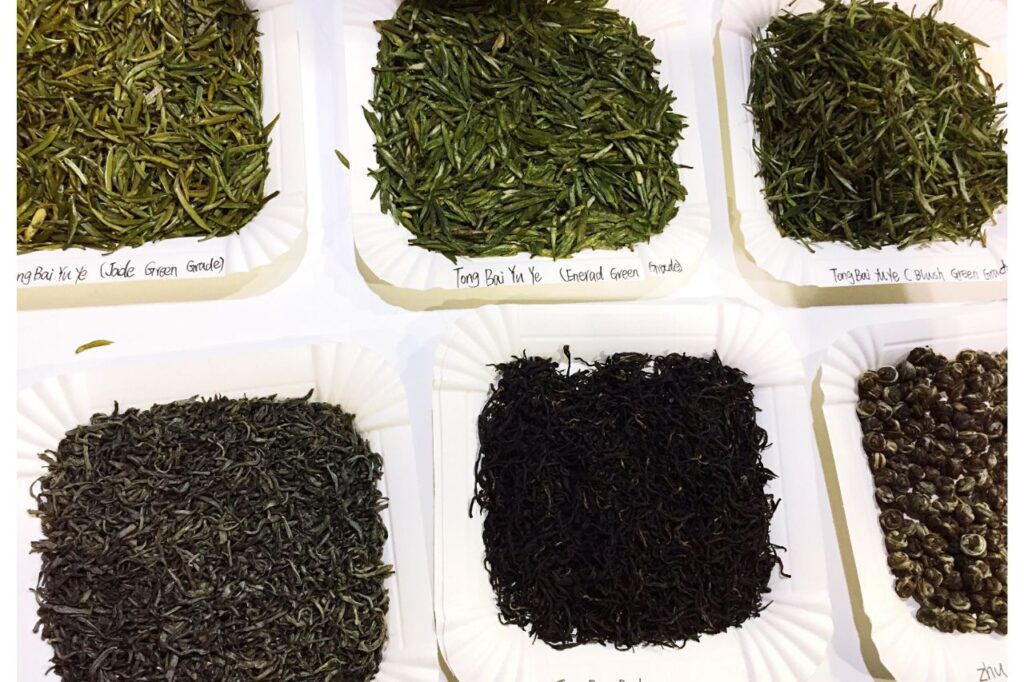
Tea truly holds a special part in our day-to-day. For some, it’s a way to wind down after a long afternoon. Others turn to tea as a pick-me-up to kickstart their day.
And for me, it is both, haha.
It’s remarkable how this drink is so especially ingrained in our lives in some way or another.
With that said, have you ever wondered how they make tea? Have you ever wondered how your loose leaves got into your favorite cup?
There’s so much more to tea than what meets the eye. The great flavors of your cuppa all come down to the tea process and production.
Tea leaves undergo an extensive, specialized, labor-intensive technique.
It includes cultivation, processing, oxidation, rolling, and so much more.
Even the quality of sunlight plays a role in it! It has many other layers, from the brand the shipping and origins.
A lot of work gets put into these leaves just for you to enjoy a great cup daily. In fact, the tea process is one of the reasons why I appreciate tea much more. It’s artistry, indeed.
Today, we’ll be talking about the whole tea production process. From the Camellia Sinesis plant up until your cup.
So, what happens beyond the bag?
Let’s start unraveling.
How Is Tea Made: The Entire Tea Production Process
Let’s take you on a tea journey. Starting from the mountains all the way to your steaming (pre-heated I hope) mug.
Step 1: Cultivation
Way before your tea leaves reach your pot, it begins as a leaf growing on a plant. The Camellia sinensis.
Camellia Sinensis
The evergreen Camellia Sinensis is a plant belonging to the Theaceae plant family. The plant can reach a height of approximately 20 feet tall.
This plant grows naturally in the wild. But, the cultivation of tea takes place in a more controlled environment.
In a tea cultivation setting, it can only grow up to 4 feet.
Its largest leaves can reach up to 9 centimeters long and 5 centimeters wide. As it grows, it creates the normal leaf spearhead shape.
However, it also has a crease through the middle with blackening near the tips producing a vibrant green color with a smooth surface.
Today, the Camellia Sinensis plant is grown all over the world. There are three distinct size classes of Camellia Sinensis too. The biggest is Assam leaves. Next are those from Cambodia. And finally, those from China.
This plant generally needs around three to four years to mature enough for tea. And when the plant springs up new branches and leaves, harvesting begins.
This process might occur just 2 or 3 times each year. However, this is more likely to happen in locations with year-round heat.
Examples of these places are Indonesia, Sri Landa, and Kenya and harvesting in these areas can take around 8 days for only one field.
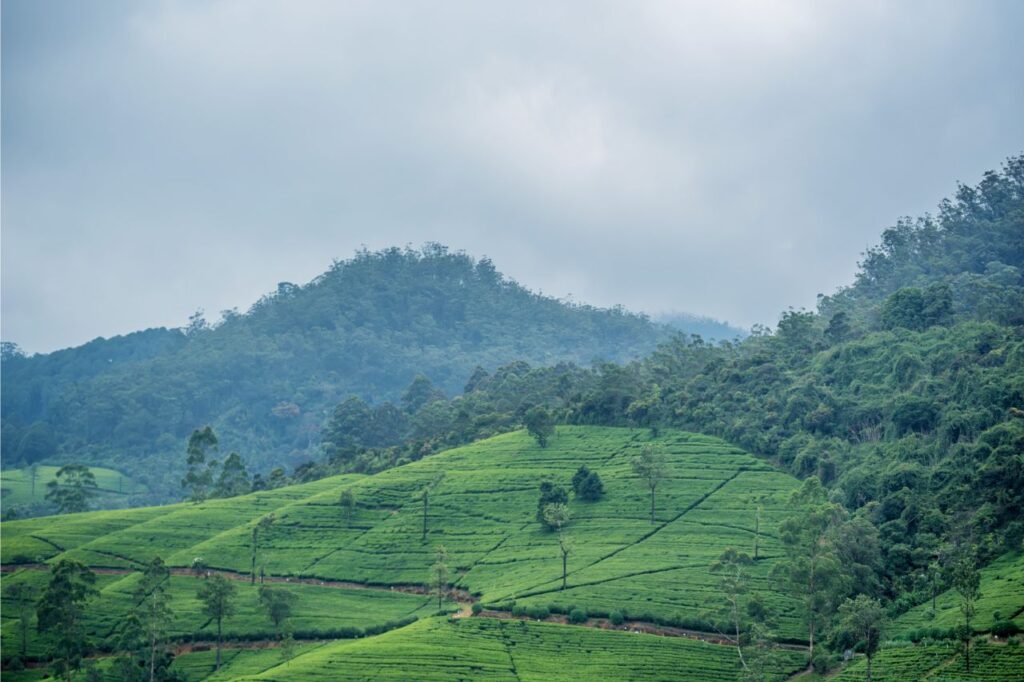
Step 2: Harvesting
The harvesting process consists of harvesters picking leaves from the tea plant. Afterward, these harvesters bring them to the nearest tea processing factoring.
Can you believe that all teas are manually picked by hand? The harvesting process is entirely manual. Farmers either use their bare hands or, they use specialized pruning shears.
Furthermore, they are also equipped with a collection basket on their backs.
You might be wondering, why can’t machines do this step? Why does it have to be completely manual? This is because of quality assurance and control.
Harvesters are experts at what they do. They know exactly the best tea leaves to pick. This is clearly something that machines can’t do, well yet, anyway!
These harvesters only pick out the tops or tips of the plant. Mainly going by as the flush. The flush contains one to two leaves, a portion of the stem, and a closed bud.
There is also something called the “Golden Flush”, where the plant has two to three leaves.
Once the leaves get harvested and picked out, they undergo sorting. In this step, people meticulously sort out leaves in accordance with the following:
- Cultivated region
- Harvesting methods
- Kind of tea for production (white, black, green, etc)
After this, the manufacturers count, bag the leaves, and finally send them off to the processing factory.
Speed is particularly crucial in this step for the utmost preservation of quality. Therefore, trucks dispatch from the field to the factory regularly throughout the day.
Next up, processing.
Step 3: Processing
All true teas come from the Camellia Sinesis plant. The tea processing accounts for the variations in appearance, scent, and taste.
For instance, green teas do not undergo an oxidation process. Instead, they go straight to drying and shaping. Some green teas also undergo grinding to produce the famous matcha green tea.
There are two types of true tea processing. The orthodox and non-orthodox (mostly known as CTC).
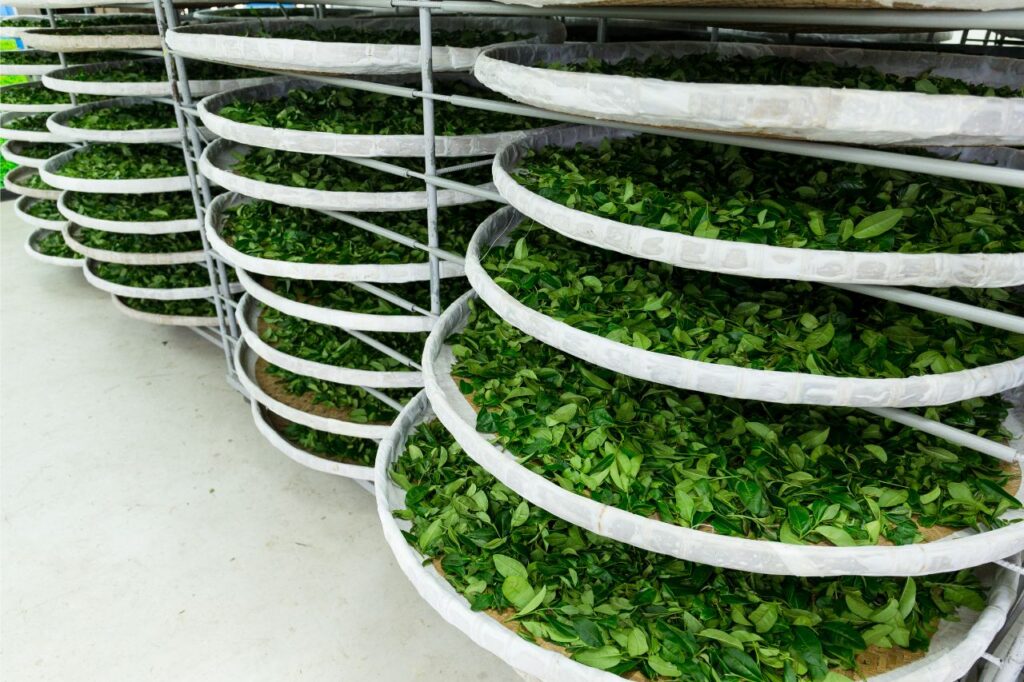
Orthodox
This method includes withering, rolling, oxidizing, and drying. These are the four stages of the orthodox process. Each stage contributes to the final taste characteristics of teas.
Withering
Usually, black and oolong teas undergo withering. This step helps remove the moisture level of the tea leaves. Withering helps in removing the moisture levels of the leaves. This way, they can roll and shape without drying or cracking.
The water content of harvested tea leaves is usually very high. It comprises approximately 75% water.
However, once they go through the oxidation and rolling process, this gets lowered to roughly 45%.
Withering consists of placing the leaves on top of a surface. Some do this on bamboo trays. Then, they get exposed to cold air for eight to eighteen hours throughout the drying process.
Rolling
After withering comes rolling to enhance the oxidation process further, traditionally, manufacturers roll tea leaves manually by hand.
However, many tea companies now employ machines to streamline the whole process.
By rolling the wilted leaves, cell membranes break down. Afterward, it releases volatile oils for taste and scent.
Oxidation
The next step after rolling is oxidation. Fermentation is another common name for this process. This is the principal element that influences your tea’s final taste and intensity.
Oxygen and enzymes react with one another during this process. This causes the breakdown of the tea’s chlorophyll. Afterward, the tannins are finally released, and as a result, the leaves darken.
Tea manufacturers regulate the oxidation process by keeping the teas in a warm, humid atmosphere, in temperatures up to 85° F.
Varieties of “real tea” are usually identified by the time spent in the oxidation process.
As stated above, green teas do not go through oxidation. This is why they keep their original green vibrancy. There are also semi or mildly-oxidized teas like oolong. This tea often produces light brown colors and has a milder taste because of its shorter oxidation process.
Drying
This method is what stops the overall oxidation process. Drying methods depend on the tea company producing the tea and some tea leaves are either baked, sun-dried, or pan-fried.
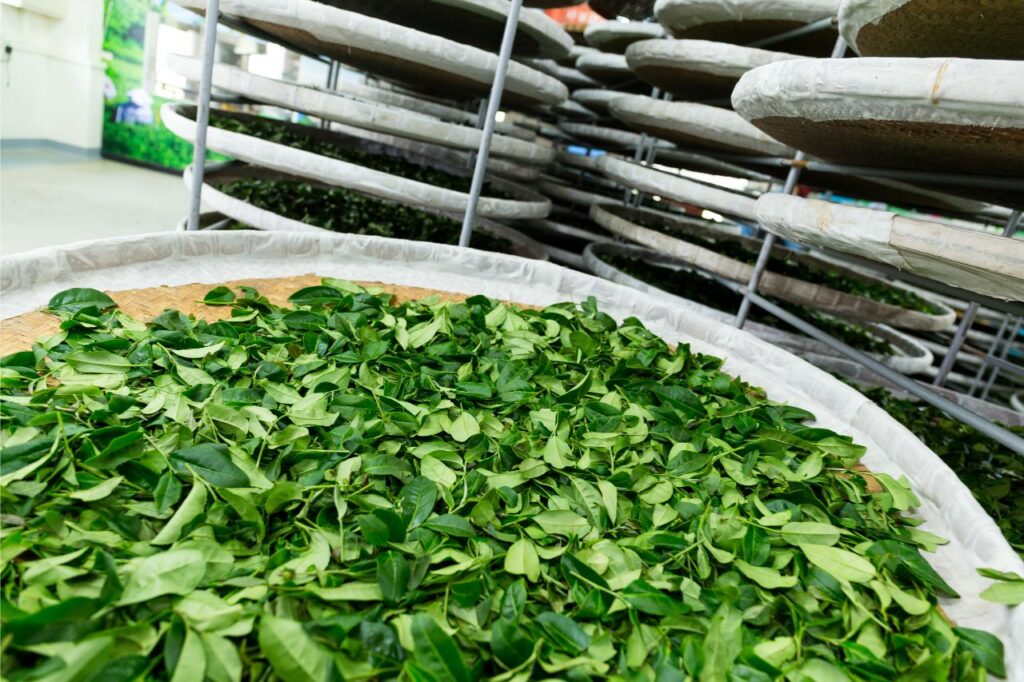
Non-Orthodox or CTC Method
The CTC technique also stands for “crush-tear-curl,”. This process yields both granular pills and fragmented leaves. Here, the leaves go through the same processes above, they only significantly differ in the rolling phase.
Manufacturing CTC requires equipment with thousands of tiny, cutting teeth for rolling the tea leaves. Here, the leaves get broken down further into tiny bits. These are the teas that go into your tea bags.
Variation Production
As you can tell, the process of making each tea type is unique. So, let’s examine those differences below.
Green Tea
As we mentioned, this tea does not go through oxidation. In fact, all of the work for this tea gets done in two days.
Green tea goes through a quick burst of heat soon after harvesting. This is what stops its oxidation. This process is also known as “dry roasting”, a technique that is commonly used in China.
However, some also use a Japanese technique, which uses steam.
Steaming the tea leaves brings forth more vibrancy to its overall color. On the other hand, dry roasting produces darker yet more flavorful tea.
White Tea
The harvests of white tea only consist of the plant’s new shoots, buds, and leaves.
This type of tea also receives little or minimal oxidation and comprises a little bit of “solar withering.”.
Then, it receives dry roasting or steaming. Essentially, the objective of this procedure is to stop oxidation.
The overall withering period might range from one to three days and White tea is often more costly than other forms of tea due to its rarity and delicate quality.
Oolong Tea
This tea type is incredibly famous and produced in Taiwan. It’s named “oolong”, which means partially fermented or oxidized. Its sits among both the green and black tea processes.
Black Tea
And finally, black tea. Black tea undergoes total oxidation, enabling complete withering. This helps with the decomposition of the proteins.
This, in turn, results in soft stems, leaves, and lower water content.
In contrast to the other true teas above, black tea additionally completes a “Disruption process.” In this method, its leaves get bruised, cut, chopped, and bent.
As a result, enzymes further help activate oxidation.
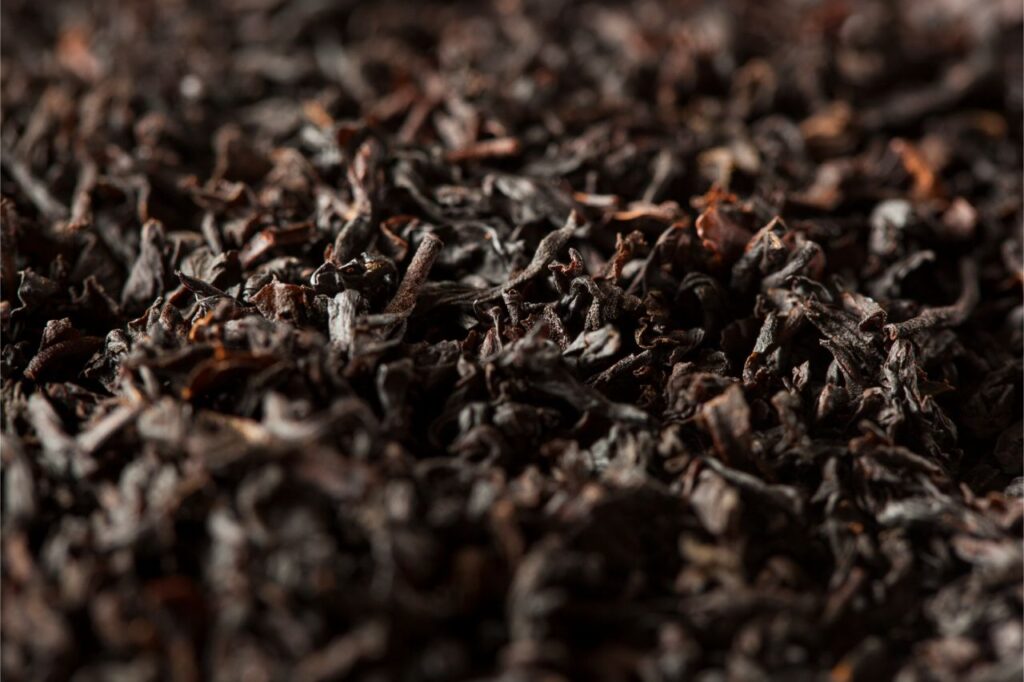
Other Ways That Teas Can Differ
There is a far wider variety of tea, with each kind requiring its own unique set of procedures. This is why going to a tea shop for the first time might be rather a sensory overload.
There is an incredible variety of teas available. So, to sum it up, these are the main things wherein teas might vary:
Tea Mixes and Blends
Some teas use the same base tea leaves. But, at the same time, they get mixed with different flavors. This is where variety really comes into play, so many companies come out with their own unique tea mixes.
Herbal Teas (Tisane)
Not all “teas” contain any true teas with Camellia Sinesis. In this case, tisanes or herbal tea is the name for it.
Some herbal teas may not even have any tea leaves at all. Sometimes, the only ingredients in tisanes are a combination of herbs and spices. One good example of this is rosemary tea or mint or chamomile, the list goes on.
I never use the word tisane to my friends as they all look at me like I am crazy.
Step 5: Packing, Labeling, Shipping
That ends the long winding production process. At this point, the teas are finally done!
Afterward, some teas go through grading machines, some also go through testing. These highly depend on the tea company. But after all of that, the teas can finally go through the packing stage.
Some factories pack their finished teas inside plywood chests. This help protects the teas all throughout shipping. Then, the teas travel to either auction facilities or are directly exported.
And one day, you’ll walk down the grocery aisles and pick up your own box. Or, perhaps, purchase it online. And the rest is for you to savor and enjoy!
How Is Tea Decaffeinated?
Decaffeinating is another topic on its own. It has different processes, too. So, if you want to read about it, we have a post HERE.
The Bottomline
I hope I got to help you better grasp the tea process from points A to B.
It’s truly a long and well-respected process, and as I said, this really made me appreciate my cuppas better.
So, the next time you head out for a cup of loose-leaf tea, remember the time, energy, and effort that goes into it.
And of course, enjoy! It’s made for you to sip on however you like it.
Happy sipping!

